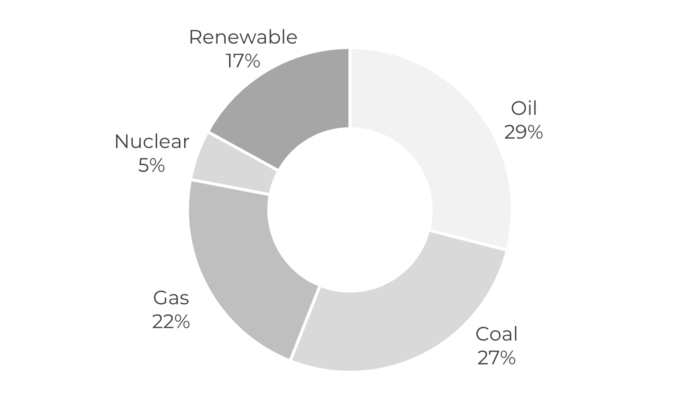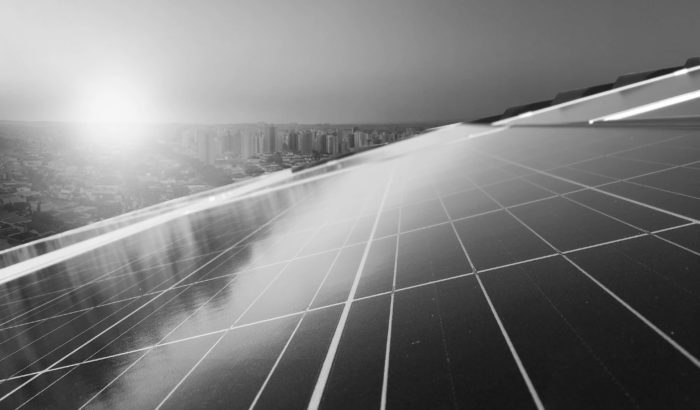What is green energy?

Energy is qualified as “green” or “renewable” when it comes from natural sources, the renewal of which is sufficiently rapid for those sources to be considered unlimited on a human time scale. Renewable energy sources, or “renewables,” are thus contrasted with fossil fuels (oil, coal, gas) which are exhaustible. Although the levels of energy and power that renewables provide are currently lower than those for fossil fuels, renewable energy sources have the advantage of generating very little waste and polluting emissions during their use. The two main natural sources of energy are the Earth, which generates heat, and the Sun, whose rays can be captured. Then we can list the energy needed for the water cycle, that of the tides generated by the Moon, in addition to wind, and the growth of plants. The main types of renewable energy are:
- Wind energy, where the driving force of the wind is transformed with the help of a wind turbine.
- Photovoltaic solar energy, where electricity is produced by transforming part of the sun’s radiation using photovoltaic cells.
- Hydraulic energy, provided by the movement of water. This energy is converted mainly into electricity by hydroelectric power stations (which exploit the potential energy of gravity during a waterfall), tidal power stations (which use the energy of the tides) or tidal turbines (which use the energy of sea currents).
- Geothermal energy, which consists of converting the earth’s heat (resulting from the nuclear disintegration of the radioactive elements in the Earth’s core) into energy.
- Biomass energy, produced through the combustion, fermentation or chemical synthesis of biodegradable organic matter.

Source: C2ES, 2018

Source: C2ES, 2018
Globally, power generation capacity from renewable sources was 2,378 GW in 2018, almost half of which was generated by hydropower plants. Renewables are still in the minority in the global energy mix today. Indeed, the share of renewable energies in final energy consumption was around 17% in 2017. Note however that 26% of electricity worldwide in 2018 came from renewable sources. This share is expected to reach 45% in 2040, making renewable energies a high growth sector. In the next five years, the global electricity capacities linked to renewable energies could increase by 1,200 GW, an increase of 50%!

The shift towards renewables is accompanying a shift towards increased electrification. Indeed, the share of electricity in the global energy mix is increasing year-on-year: the smoothed average annual growth between 2006 and 2016 in global final energy consumption is 1.7% while that of final electricity consumption is 2.9%. This increased demand for electricity reflects rising global requirements in:
- Heating / air conditioning
- The digital sector
- Transport, with a transition from traditional heat engines to electric motors
Thus, the place of electricity in the global energy mix should reach 24% in 2030, in contrast to 18.8% for 2016. The graphs below presenting the energy mix forecasts according to various organisations highlight various factors, namely:
- On the one hand, our world’s overall increase in energy consumption together with the increase in renewables, although fossil fuels remain in the majority.
- On the other hand, the net increase in global electricity production by 2040, driven in particular (depending on the scenarios) by renewable energies.

Source: Resources for the Future, Global energy outlook 2020

Source: Resources for the Future, Global energy outlook 2020
However, the rise of renewables, also known as “green energy” or “clean energy,” requires for the capacity to build new energy-generating infrastructure, as well as associated energy transport networks and energy storage solutions. And crucially for us, the various technologies used in these low-carbon energy industries require specific materials, and rare metals in particular. Hence the interest in investing today in the critical metals needed for renewable energy industries. We’ll talk more in our next blog about green energy rare metals forming a central part of the renewable energy investment universe.
Sources
- Carbon Brief, Explainer: These six metals are key to a low-carbon future, 2018.
- Center for climate and energy solutions, https://www.c2es.org/content/renewable-energy, 2019.
- Institute for Sustainable Futures, Responsible minerals sourcing for renewable energy, 2019.
- International Renewable Energy Agency (INERA), Future of Wind, Octobre 2019.
- André Månberger, Björn Stenqvist, Global metal flows in the renewable energy transition: Exploring the effects of substitutes, technological mix and development, 2018.
- Wind Europe, Financing and investment trends report, 2019.
- Richard G. Newell, Daniel Raimi, Seth Villanueva, and Brian Prest, Resources for the Future, Global energy outlook 2020: energy transition or energy addition?, mai 2020.
- Encyclopédie de l’énergie, https://www.encyclopedie-energie.org, 2019.